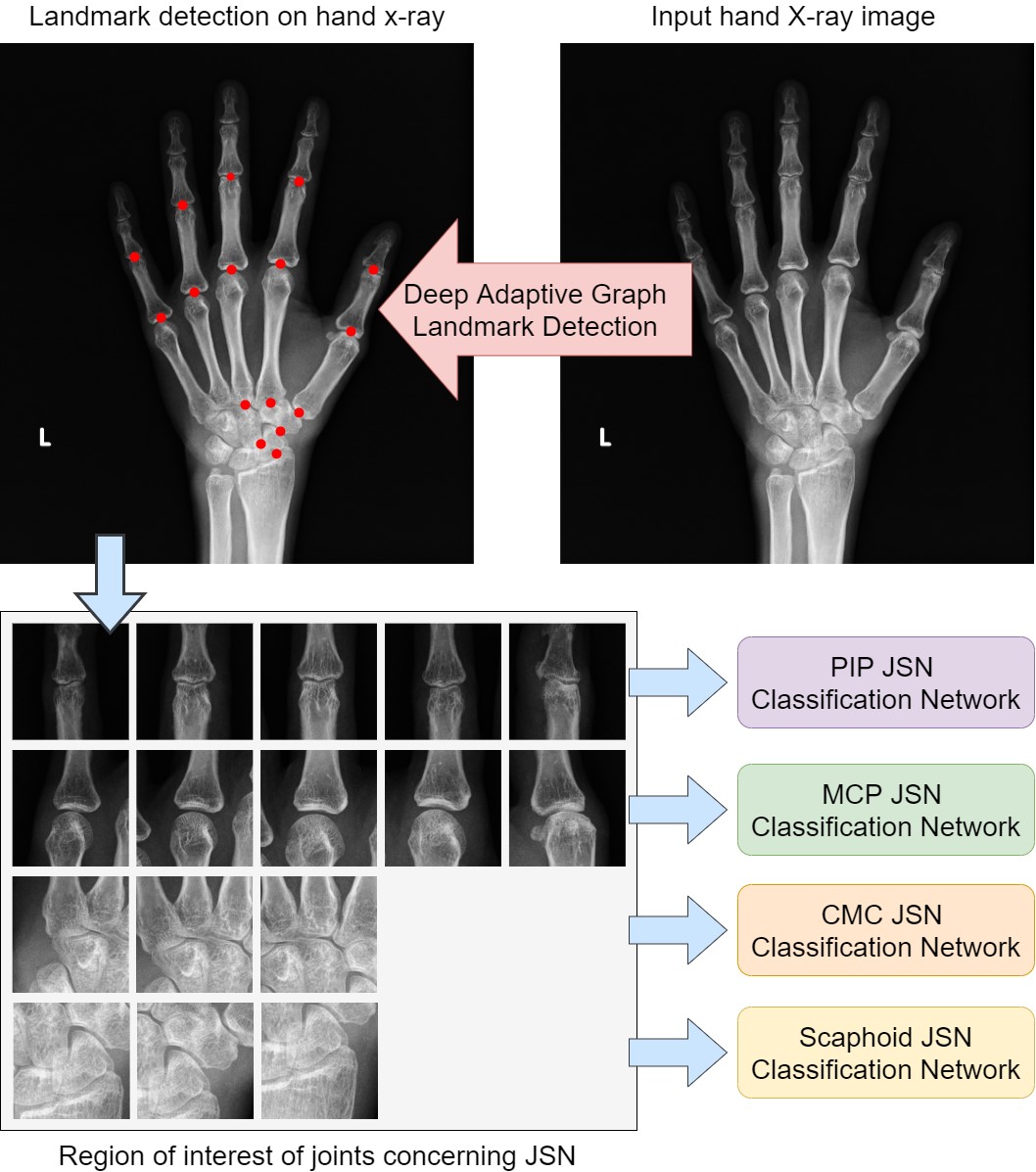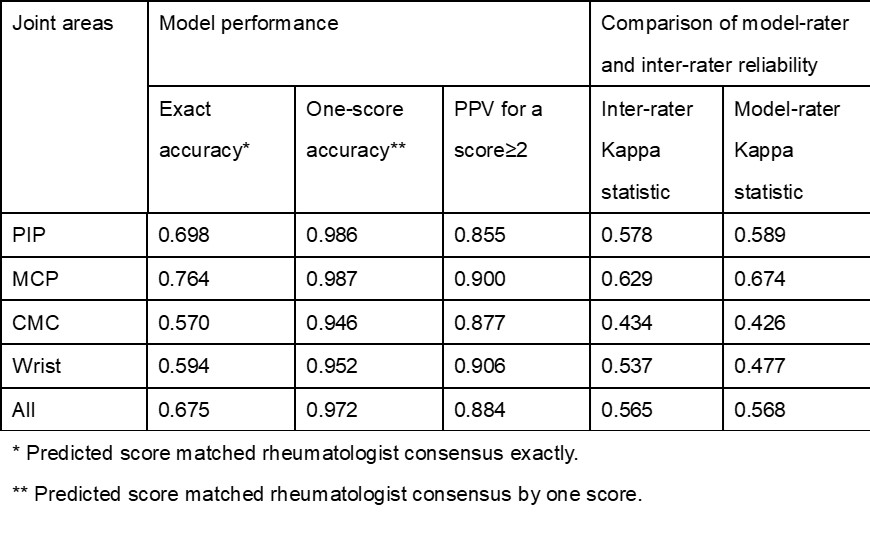Session Information
Date: Friday, November 6, 2020
Title: RA – Diagnosis, Manifestations, & Outcomes III: Major Comorbidities in RA (0489–0493)
Session Type: Abstract Session
Session Time: 5:00PM-5:50PM
Background/Purpose: Assessment of joint space is the fundamental radiographic task to diagnose rheumatoid arthritis (RA) and to assess the severity and progression of the disease. The clinical assessment of joint space is a visual task, and the current scoring systems, such as the modified Sharp’s score, generally follow the semiquantitative grading.(1) The inter- and intra-observer variation impede the development of computer-aided detection and diagnosis software to help physicians.(2) This exploratory study aims to assess the performance of a deep-learning model for detecting and scoring joint space automatically and compare it with the physician’s performance.
Methods: We collected 1,397 conventional hand radiographs from 450 RA patients (training: 309; validation, 141) whose diagnoses were based on the 2010 ACR/EULAR criteria for RA. Three rheumatologists assessed the joint space independently according to the van der Heijde-modified Sharp scoring method. The consensus was the ground truth for training data. We trained a model to detect joints automatically using the Deep Adaptive Graph (a landmark detection technique based on graph convolutional network; figure 1). The extracted region of interest was fed into the joint space assessment algorithm to predict the joint space score and compare it with rheumatologists’ scoring. The model-rheumatologist agreement was compared to the inter-rater agreement between rheumatologists as an assessment for model performance. The accuracy of the model to predict an exact joint space score of rheumatologist consensus, a joint space score of rheumatologist consensus by one score, and score a joint space score ≥ 2 were also performed.
Results: Among 141 RA patients in the validation set, the mean age was 57.9 years, and 82.3% were female. The overall model-rater agreement was similar to the inter-rater agreement with Kappa statistics of 0.568 and 0.565, respectively. The accuracy to predict exact the joint space score of rheumatologist consensus and to predict the joint space score of rheumatologist consensus by one score were 0.674 and 0.973. The model sensitivity, specificity, and positive predictive value to detect a joint space score ≥ 2 were 0.808, 0.919, and 0.884, respectively. The performance was consistent across different joint areas as shown in Table 1.
Conclusion: This study indicates that deep learning models are useful to detect specific joint area and score the joint space with performance comparable with rheumatologists.
 Figure 1. Flow chart for the development of joint detection and joint space scoring algorithms.
Figure 1. Flow chart for the development of joint detection and joint space scoring algorithms.
 Table 1. Performance of joint space scoring algorithm.
Table 1. Performance of joint space scoring algorithm.
To cite this abstract in AMA style:
Huang Y, Kuo C, Wang F, Miao S, Zheng K, Lu L. Automatic Joint Space Assessment in Hand Radiographs with Deep Learning Among Patients with Rheumatoid Arthritis [abstract]. Arthritis Rheumatol. 2020; 72 (suppl 10). https://acrabstracts.org/abstract/automatic-joint-space-assessment-in-hand-radiographs-with-deep-learning-among-patients-with-rheumatoid-arthritis/. Accessed .« Back to ACR Convergence 2020
ACR Meeting Abstracts - https://acrabstracts.org/abstract/automatic-joint-space-assessment-in-hand-radiographs-with-deep-learning-among-patients-with-rheumatoid-arthritis/
